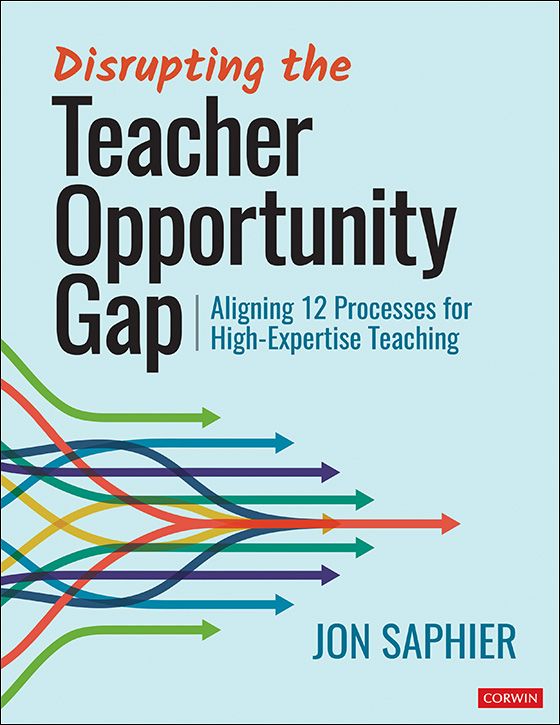Supervison + Evaluation
The research is in: formal teacher evaluation events typically have little impact on improving teaching or addressing unsatisfactory performance. (Kraft & Christian, 2022)

There are several reasons for this:
- Lack of frequency: The visits are too infrequent and shrouded in identity threatening procedures.
- Lack of quality: The evaluators have insufficient training and skill to notice what is important and give feedback that is useful.
- Lack of trust: The system is not constructed to strengthen the elements of strong, healthy adult professional culture focused on making the school a “learning organization” that gets superior student achievement.
But, we can, and we must, tackle each of these barriers to provide the time, training, and support needed to ensure we are continually growing our teaching expertise, and thus increasing our ability to meet the needs of each and every student.

Disrupting the Teacher Opportunity Gap
Jon Saphier's new book provides a roadmap with specific actions to take at every level to focus on student and staff learning.
"This book is a synthesis of over fifty years of research and practice that WORKS. If practitioners, leaders, and governmental officials want to know how to make education work for all, READ THIS BOOK. It is a step-by-step guide for people at every level to help us all learn."
Bill Sommers
Lack of Frequency
The current design of teacher evaluation systems overloads administrators with number of teachers to observe and documents to complete. In no other industry do we expect supervisors to give quality feedback to forty-plus people at a time, but that is the reality we face in our schools. A reality not likely to change any time soon.
So, we need to figure out how to leverage the power of frequent, short, high-impact classroom visits that produce quality conversations unencumbered by bureaucracy. This likely means more people involved than just the school leader.

We cannot rely on teacher evaluation to be the prime engine for the improvement of teaching and learning. |
Lack of Quality
Current evaluator training is grossly inadequate for the significance of the task. It takes ongoing training and support to develop the skills needed to first notice what is and what isn't happening in the classroom, and then to give productive feedback to the teacher. This is no easy task - and to expect a school leader to be able to do this well given the lack of training and lack of time they are given to focus on instruction is untenable.
The purpose of observation and feedback is to give teachers useful information to improve their practice and impact on student learning. |
Lack of Trust
We all come into the field of education because we want to make a difference in the lives of our students. We all want to get better. But, without frequency and quality, how can we be expected to trust the feedback we are receiving?
In order to develop trust - both in the classroom and throughout a school, it takes consistency, collaboration, and above all the belief that:
This is important
You can do it
I am not going to give up on you

The road to trust goes through the land of frequency and quality. |
What's Next
We know the current system isn't working. So, what can we do about it?
In his new book, Disrupting the Teacher Opportunity Gap, Aligning the 12 Processes for High-Expertise Teaching, Jon Saphier outlines the areas that we must tackle to shift the focus of all our school to one of constant learning about High-Expertise Teaching. A successful teacher evaluation system, he posits must meet the following criteria:
- It will create drill-down, clear, shared images of what good teaching and learning looks and sound like.
- It will be grounded on training of evaluators to be skilled at observing for what matters and giving productive feedback.
- It will manifest respect for teachers, for the complexity of teacher decision-making and the need for constant learning.
- It will go beyond teacher-centered observation to student-centered observation.
- It will provide clear procedures for fair, humane but decisive action in the presence of unsatisfactory teaching.
- It will be designed to invite a strong culture of risk-taking and constant learning.
To read more about what it takes to meet these criteria, see Chapter 9: Teacher Evaluation Done Right in Disrupting the Teacher Opportunity Gap.

"This book is a synthesis of over fifty years of research and practice that WORKS. If practitioners, leaders, and governmental officials want to know how to make education work for all, READ THIS BOOK. It is a step-by-step guide for people at every level to help us all learn." |
Bill Sommers |